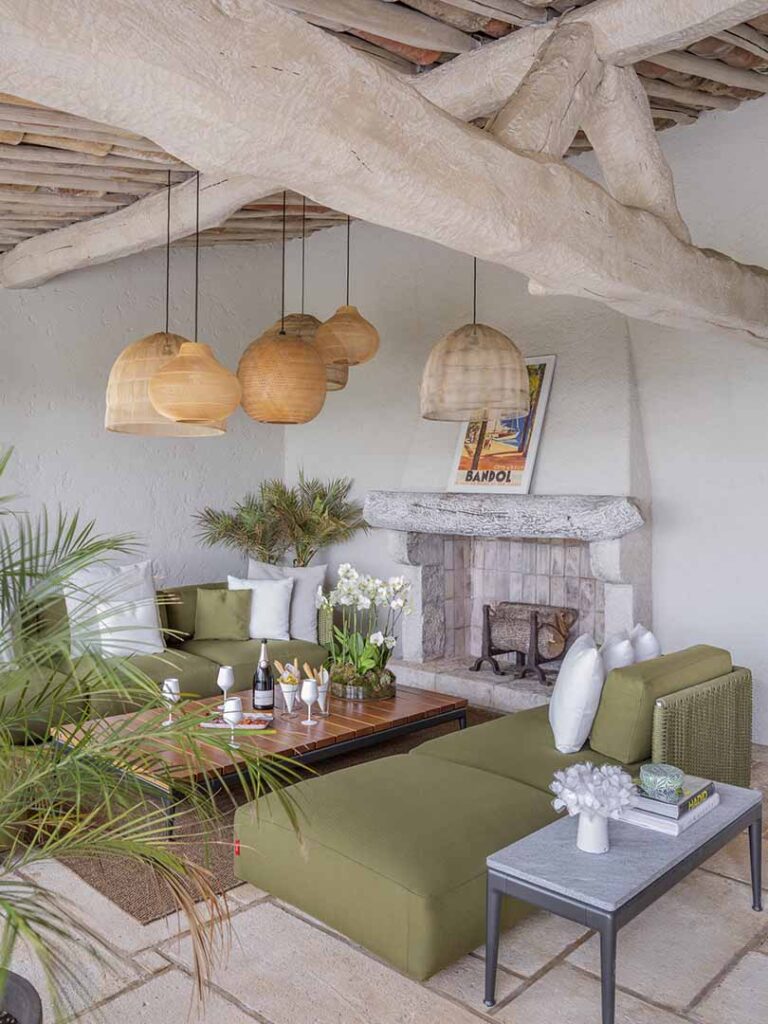From a young age, Nathalie Ludwig harbored a deep passion for creating beautiful and functional spaces. Her dream was to transform ordinary rooms into extraordinary experiences, blending elegance with comfort. This passion drove her to pursue a career in interior design, overcoming numerous challenges along the way. Starting her journey in the Cannes region of France, Nathalie’s determination and resilience were key to navigating the competitive world of design and establishing herself as a respected figure in the industry.
Nathalie Ludwig’s career began in childhood, influenced by her father, a salesman for a major furniture company. Thanks to her mother, who is German, and her professional influence, Nathalie has developed a remarkable sense of public relations. Her specialist studies in Marseille and Paris have honed her natural talent for interior design. Inspired by the decorating magazines scattered throughout her family home, she developed a unique philosophy where aesthetics and comfort coexist harmoniously. “For me, architecture should be a place where life is enjoyable, combining practicality, technique, and modern technology,” she explains. Her high-end residential projects embody this vision, incorporating the latest innovations in home automation and materials while staying true to timeless values.
Her dedication paid off as she developed an impressive portfolio, marked by a meticulous approach to preliminary drafts, technical studies, and the implementation of site plans. Each project under her belt stands as a testament to her ability to turn her clients’ dreams into reality, ensuring precision and beauty in every detail.
To delve deeper into Nathalie Ludwig’s extensive expertise and the principles that guide her work, we will be interviewing her. Join us as we explore the precision, passion, and artistry that define her contributions to the field of interior design.
1. Can you share the initial spark or inspiration that led you to choose interior design as your career? What were the early steps you took to embark on this path, and how did your journey unfold from those beginnings to where you are today?
I’ve always been drawn to beauty and functionality in spaces, which led me to travel extensively, immersing myself in different cultures and design styles. Being deeply involved in various projects, I’m constantly seeking new inspiration, whether it’s through architecture, art, or simply observing how people interact with their environments. These experiences have shaped my perspective and guided me on my path from the beginning. My journey has been a continuous evolution, where each project teaches me something new, refining my approach and fueling my passion for creating spaces that are both beautiful and practical.
2. Having worked extensively in the Cannes region and other areas of France, how have these experiences shaped your approach to interior design? Can you discuss specific elements of French culture and aesthetics that have influenced your style and how you incorporate them into your projects?
Working in the Cannes region and other parts of France has ingrained in me the importance of maintaining high standards—something that is deeply rooted in French culture. There’s a certain ‘French chic’ that embodies quality, elegance, and simplicity, which I always strive to incorporate into my work. Whether it’s through the selection of materials or the overall aesthetic, I aim to balance luxury with understated elegance. The cultural emphasis on craftsmanship and attention to detail is something I carry into every project, ensuring that my designs reflect the essence of French style—timeless, yet modern.
3. What are the fundamental principles and philosophies that guide you when creating preliminary drafts and conducting technical studies for a project? How do these principles ensure that your designs are both functional and aesthetically pleasing?
Listening closely to my clients is paramount; I believe every house has its own history, and each client brings their unique story. This understanding allows me to create spaces that are not only visually appealing but also deeply personal and functional. My ability to adapt to each project is essential, as I work with high-quality materials like natural stone and wood, both of which I hold in high regard. Craftsmanship is at the heart of my work—it’s about honoring the skill and dedication that goes into woodwork and stonework. By blending aesthetics with cutting-edge technology, I ensure that my designs are both timeless and innovative.

4. When it comes to translating your design vision into site plans and technical drawings, what methods and practices do you employ to guarantee precision and accuracy? Can you explain the importance of these elements in the overall success of a project?
The process begins with creating sketches and detailed 3D drawings. This step is crucial because it provides a clear visual representation for both the owner and the craftsmen. Precision and accuracy in these drawings are vital, as they lay the foundation for the entire project. It’s through this careful planning that we ensure the final result aligns with the client’s vision. The clarity these drawings provide helps prevent misunderstandings and ensures that everyone involved in the project is on the same page, which is essential for a successful outcome.
5. Could you provide an example of a project where your meticulous approach to detailed drawings and the realization process were critical to achieving the desired outcome? What challenges did you face, and how did your attention to detail contribute to the project’s success?
Working on old houses is particularly challenging because they often present unexpected issues that require constant adaptation. For instance, in one project, we encountered structural problems that were not evident until we started the renovation. My meticulous approach to detailed drawings and close supervision allowed us to address these issues without compromising the overall design. By staying flexible and focused on the details, we were able to overcome these challenges, ensuring that the final result was not only true to the original vision but also structurally sound.
6. When handling the financial and logistical aspects of a project, what is your strategy for studying and negotiating quotes? How do you ensure that work schedules are managed effectively and that coordination among various stakeholders is smooth and efficient?
Once the design is finalized, we prepare detailed descriptions and send them to various companies for quotes. I pay close attention to every detail in these quotes, ensuring that there are no surprises later on. Assembling the right team of specialists is crucial, and daily site visits are an absolute must. There’s no secret to finishing a project on time other than being present—every single day, at least once! We also hold regular site meetings and closely monitor the schedule to make sure everything stays on track. This hands-on approach is what allows us to manage the financial and logistical aspects smoothly and ensure the project is completed successfully.








